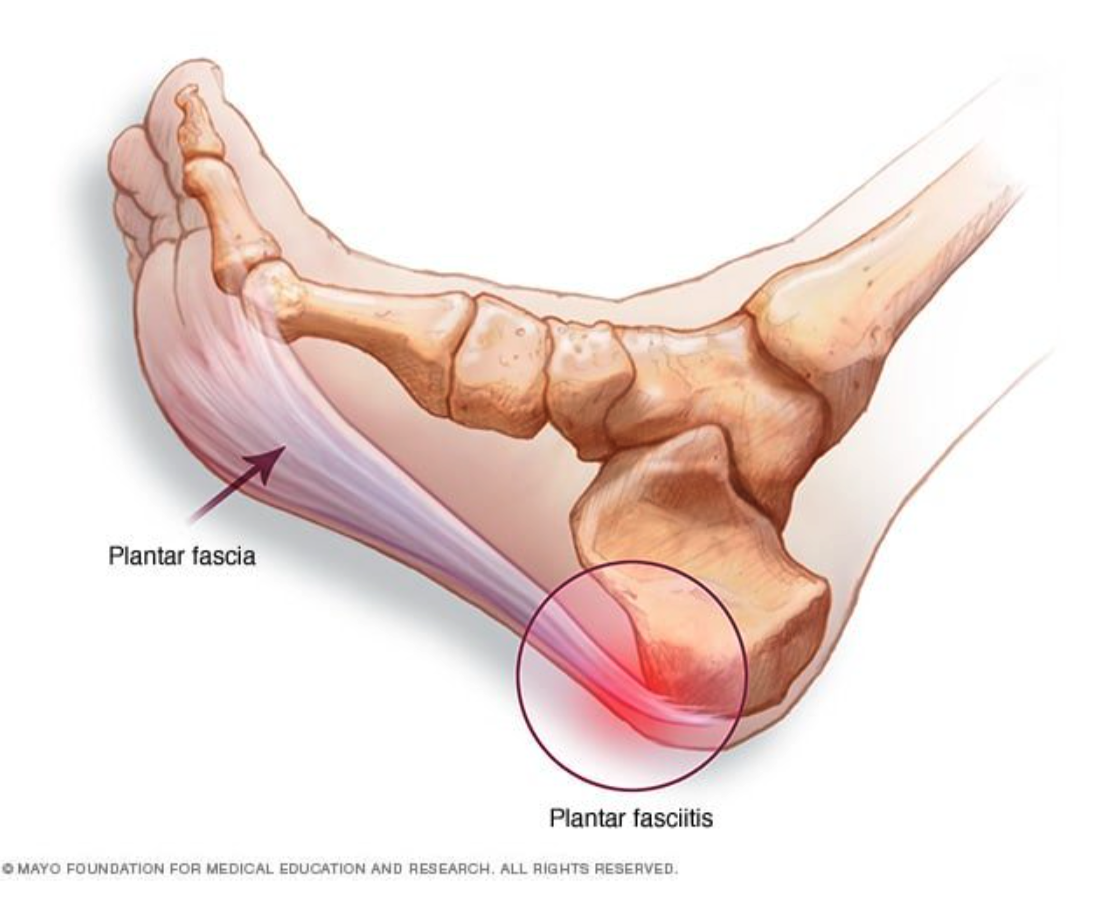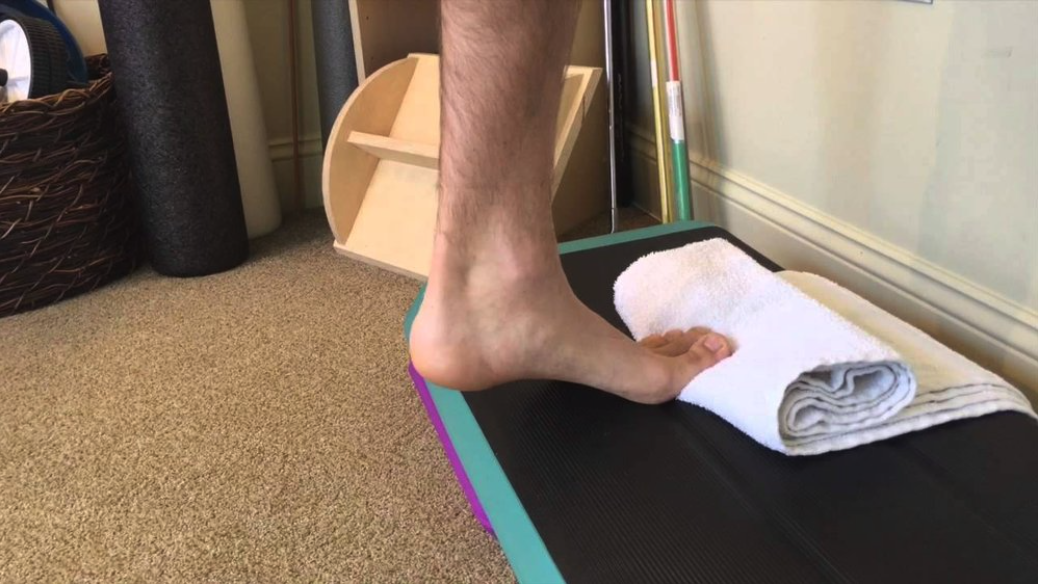Why Physical Therapy is the Best Treatment Option for Plantar Fasciitis

Introduction
Plantar fasciitis is responsible for 1 million ambulatory patient care visits annually in the United States, and is the most common cause of heel pain presenting in the outpatient setting. However, many patients with this condition are not referred to physical therapy for treatment. Instead, these patients are recommended passive “fad” treatments that provide only short-term relief. In this blog I will discuss why these passive treatments are not a long-term solution to solve plantar fascia related pain, and how research has shown that physical therapy actually provides lasting pain relief solutions.
What Is Plantar Fasciitis?
Plantar Fasciitis has long been attributed to inflammation of the plantar fascia, yet current evidence suggests that the disease is more likely attributed to microscopic degeneration and subsequent thickening of the tissue (Lemont, et al). This is why rest, ice, or taking anti-inflammatory medications never work as long-term solutions.

Clinical Presentation of Plantar Fasciitis
- Heel pain with first steps in the morning or after long periods of non-weight bearing
- Tenderness to the anterior medial heel
- Limited dorsiflexion and tight achilles tendon
- Pain that is usually worse when barefoot on hard surfaces and with stair climbing
- Sudden increase in activity level prior to the onset of symptoms
- May present with a limp or may have a preference to toe walking

Why is PT the Best Treatment Option?
In the past, I have had several patients tell me that they have spent a lot of money on passive treatments to improve plantar fasciitis symptoms. One of the most popular passive treatment options for plantar fasciitis is Cortisone injections. One may receive temporary relief from steroid injections, however it is not a long-term solution. Getting a steroid injection to treat joint pain is essentially putting a band-aid over the problem. An injection is not directly addressing the root cause of the plantar fasciitis pain. So, when the steroid injection wears off you are in just as much pain, if not more, than before the injection. In addition, studies have shown that repeated injections over time may actually damage tendons, ligaments, and cartilage at the injection site. This damage to the surrounding soft tissue structures leaves one at a high-risk for serious adverse events such as plantar fascia rupture.
Another popular passive treatment option is low level laser therapy (LLLT), which is based on the principles of photochemistry that militates via photochemical or nonthermal effects on cells. However, studies investigating its effectiveness for treatment of Plantar Fasciitis is scarce. One meta-analysis indicated that compared with the control group, visual analogue scale (VAS) score decreased at the end point of the treatment in the LLLT group. However, this improvement was short-term and only lasted 3 months. In addition, no significant difference was observed according to the Foot Function Index-pain subscale (Wang, et al).
So, what does the evidence-based research actually support to improve symptoms of plantar fasciitis? The answer may be more simple than you think… Research states that a combination of 1) high-load strength training (Rathleff, et al), 2) passive and dynamic stretching (Digiovanni, et al), 3) and manual therapy are highly effective treatment options in the treatment of plantar fasciitis (Fraser, et al). This combination of interventions has been shown in research to actually provide lasting, long-term, solutions to plantar fasciitis related pain.

Is Plantar Fasciitis related foot pain holding you back from participating in the activities you love? Don’t know where to start when trying to get rid of your PF pain? Schedule you FREE phone consultation with one of our Doctors of Physical Therapy!
References
- Wang W, Jiang W, Tang C, Zhang X, Xiang J. Clinical efficacy of low-level laser therapy in plantar fasciitis: A systematic review and meta-analysis. Medicine (Baltimore). 2019 Jan;98(3):e14088. doi: 10.1097/MD.0000000000014088. PMID: 30653125; PMCID: PMC6370152.
- Rathleff MS, Mølgaard CM, Fredberg U, Kaalund S, Andersen KB, Jensen TT, Aaskov S, Olesen JL. High-load strength training improves outcome in patients with plantar fasciitis: A randomized controlled trial with 12-month follow-up. Scand J Med Sci Sports. 2015 Jun;25(3):e292-300. doi: 10.1111/sms.12313. Epub 2014 Aug 21. PMID: 25145882.
- Digiovanni, Benedict F. MD1; Nawoczenski, Deborah A. PhD, PT2; Malay, Daniel P. MSPT3; Graci, Petra A. DPT4; Williams, Taryn T. MSPT5; Wilding, Gregory E. PhD6; Baumhauer, Judith F. MD1. Plantar Fascia-Specific Stretching Exercise Improves Outcomes in Patients with Chronic Plantar Fasciitis: A Prospective Clinical Trial with Two-Year Follow-Up. The Journal of Bone & Joint Surgery: August 2006 - Volume 88 - Issue 8 - p 1775-1781 doi: 10.2106/JBJS.E.01281
- Lemont H, Ammirati KM, Usen N. Plantar fasciitis: a degenerative process (fasciosis) without inflammation. J Am Podiatr Med Assoc. 2003;93:234-237. https://doi. org/10.7547/87507315-93-3-234
- Fraser JJ, Glaviano NR, Hertel J. Utilization of Physical Therapy Intervention Among Patients With Plantar Fasciitis in the United States. J Orthop Sports Phys Ther. 2017 Feb;47(2):49-55. doi: 10.2519/jospt.2017.6999. PMID: 28142368.
Sign up for our newsletter
Join our community and receive exclusive physical therapy insights, training strategies, and recovery techniques tailored for active people.
